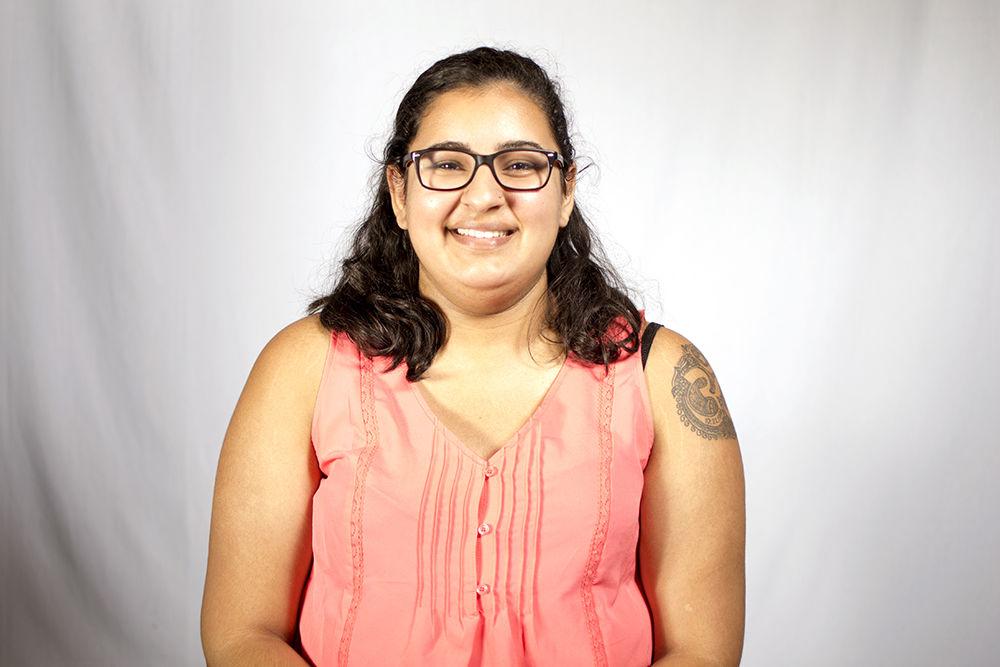“I am here today to acknowledge and represent the African-American girls whose stories don’t make the front page of every national newspaper.”
Eleven-year-old Naomi Wadler was one of nine speakers at the March for Our Lives in Washington, D.C. who talked about the effects of daily gun violence within communities of color across the nation. Students from cities like Chicago, Los Angeles and New York spoke about the personal pain and loss they had suffered due to guns.
Minority communities of color — specifically black and brown people — have been pleading with this nation for months, years, decades for help in countering gun violence and police brutality within their communities. Protests for Black Lives Matter across the nation, rather than receiving positive support, coverage and endorsements from celebrities, have historically been met with excessive force by the police and a blind eye from the rest of the nation.
Standing in the crowd at the March for Our Lives in Washington, D.C., I was surrounded by a sea of people passionate about enacting some sort of gun reform. More so, I was surrounded by a people who rallied behind a predominantly white group of students who are now the face of gun reform in a way that students of color, despite years of pain, pleas and protests, have never been.
Aalayah Eastmond is a survivor of the shooting at Marjory Stoneman Douglas High School. At the March for Our Lives, she made sure to highlight the need for an intersectional approach to the movement toward common-sense gun reform. “Yes, I am a Parkland survivor and an MSD student, but before this, I was a regular black girl and after this, I am still black and I am still regular and I will fight for all of us,” Eastmond said.
In working to enact genuine change, the mentality of working from the top down is a mentality that will ultimately only benefit a few. Rather, it is important to work from the bottom up. Working to enact change in communities who are the most disadvantaged in society automatically brings positive change throughout the rest of the hierarchy.
In the fight for gun control and common-sense gun reform, banning all military-grade assault weapons and guns such as the AR-15 is definitely one step in the right direction. However, this kind of a ban does nothing to stop gun violence in low-income communities across the nation.
“When you have a city that feels it’s more important to help pay for a college’s sports’ complex rather than fund schools and impoverished communities, you have gun violence,” said Trevon Bosley, a youth leader from Chicago who lost his brother to gun violence in 2006.
“When you have a city that feels we need more Divvy Bikes in downtown Chicago for tourists rather than more funding for workforce programs to get guys off the streets [into] real jobs, you have gun violence,” said Bosley. “When you have an Illinois state governor, Bruce Rauner, who feels that funding anti-violence programs is, I quote, ‘non-essential spending,’ you have gun violence. When you have elected officials who feel that getting a few extra dollars from the NRA is more important than the actual constituents, you have gun violence.”
This problem is bigger than mass shootings at schools. This problem is bigger than just banning bump stocks, AR-15 rifles or even just raising the age for when someone can buy a gun — something that has only happened on a state level. Until police stop brutalizing communities of color, until the public education system, particularly in urban, low-income communities, receives more funding to accurately teach and mentor their students, gun violence will continue to permeate this country at disproportionate levels.
According to the Charlotte Observer, federal data shows that more people died at the hands of gun violence in 2016 in North Carolina than any of the previous 35 years. Although the cause for this increase is yet unknown by experts, the data shows that homicides by firearm have increased significantly — a whole 27 percent from 2015 to 2016.
Last summer, I wrote a column about House Bill 746, an omnibus gun bill that was, at the time, being debated in the North Carolina House of Representatives. In the months since, the bill has been passed by the House and sent to the Senate, where it has been referred to the Committee on Rules and Operations of the Senate. The bill loosens restrictions around access to guns in North Carolina, including lowering the legal age to concealed-carry a handgun from 21 to 18, as well as allowing gun owners to carry a concealed gun without a permit in any place that they could carry a gun openly.
As stated in an editorial published Monday, every single seat in the North Carolina General Assembly is up for reelection in the upcoming midterm elections. Even if HB 746 does pass the Senate, the constituents of this state have an opportunity to elect legislators into the NCGA who can overturn the bill.
I encourage you to register to vote if you haven’t already and get involved in the surge of students fighting for common-sense gun control. Just make sure that your efforts toward gun reform take into account all communities affected by senseless gun violence; a movement that is not built in intersectionality is a failed movement.














